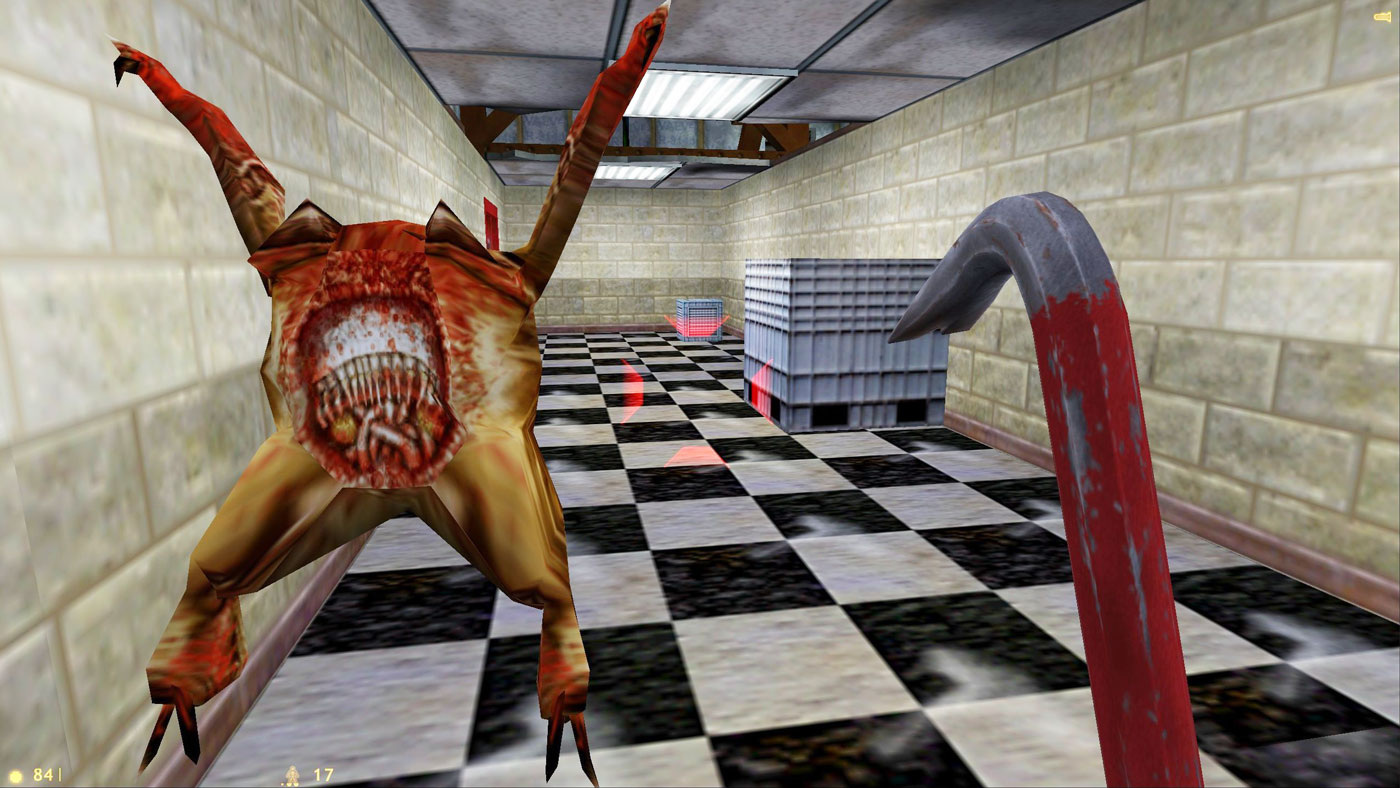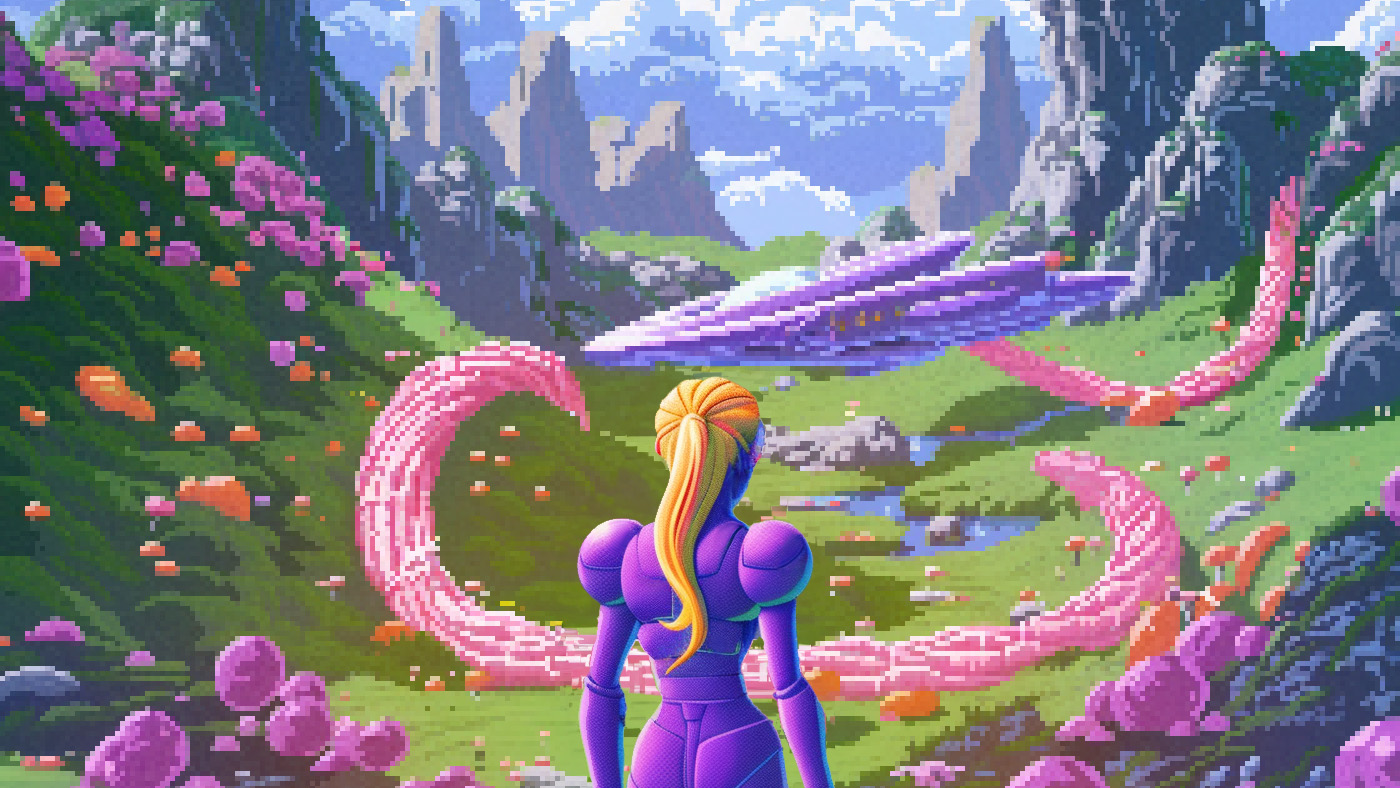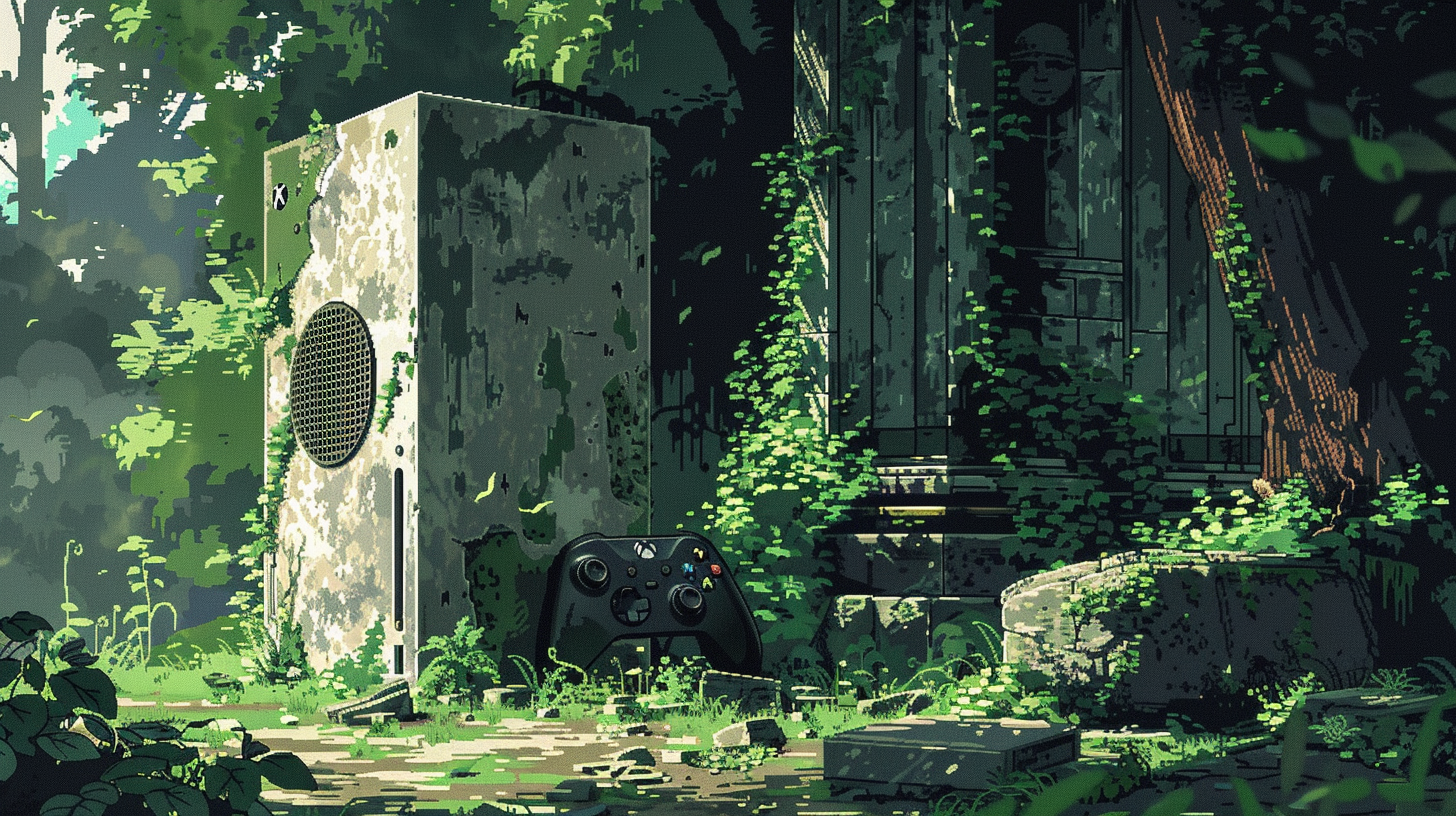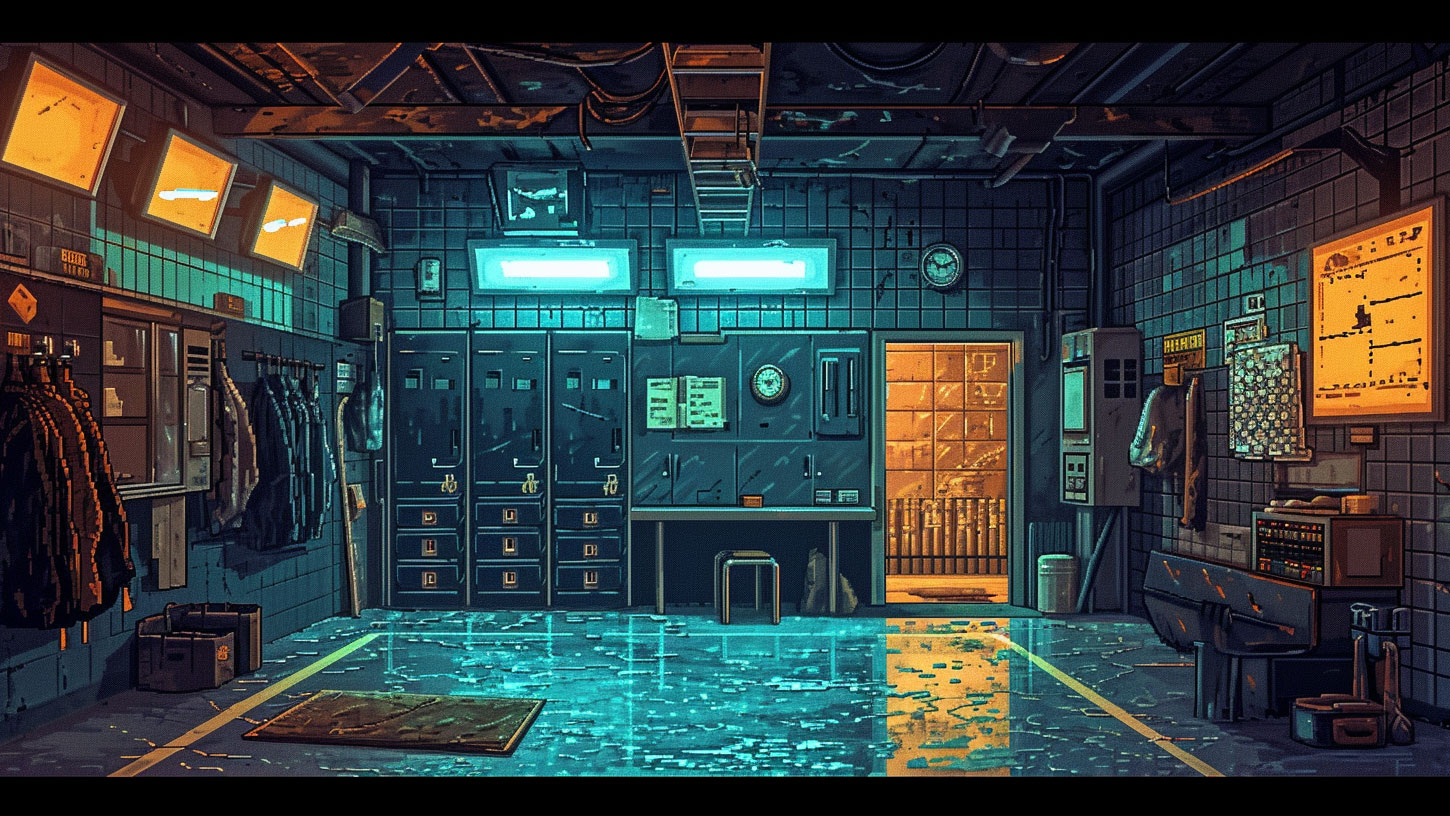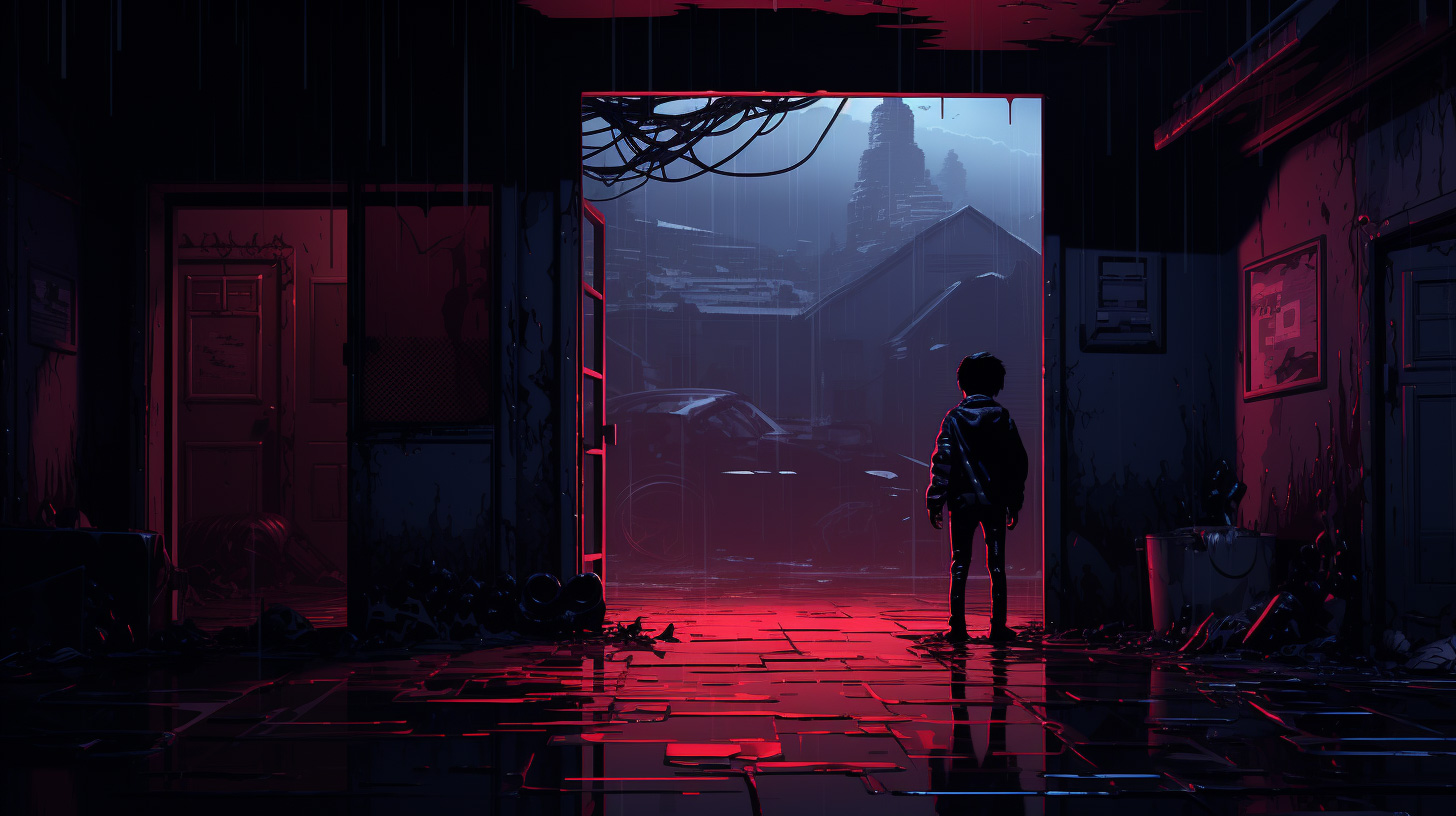This week Half Life went on sale (was free for some people, for some reason I had to pay $1) on Steam, and I bought a copy to reminisce. The sale was held to celebrate the game’s release 25 years ago, and naturally it took pride of place in the Steam storefront: the game was Valve’s first, and Valve runs Steam.
I played the game back in 1998 when it was released, and I recall the sense of a step change. Everyone agreed: Half Life has a Metacritic score of 96/100 and was voted “best game of all time” by several publications in the 2000s. It’s a first-person shooter that puts you in the shoes of Gordon Freeman, a scientist who has to shoot his way out of a secure research facility overrun by aliens. Doesn’t sound too cerebral, but actually it was pretty cool.
I was curious how it would hold up in 2023, and what it tells us about the games we are playing now.
Sound is immersion
Audio hasn’t advanced like graphics in a quarter century. The audio in Half Life is high-fidelity, spatial, and atmospheric. Audio in game design is crucial but doesn’t get much attention. People don’t obsess over their audio equipment, but sound is just as important as visuals for immersion, and sometimes more so. With Half Life, the audio isn’t at modern AAA levels, but it’s a darn sight closer than the graphics.
Graphic realism
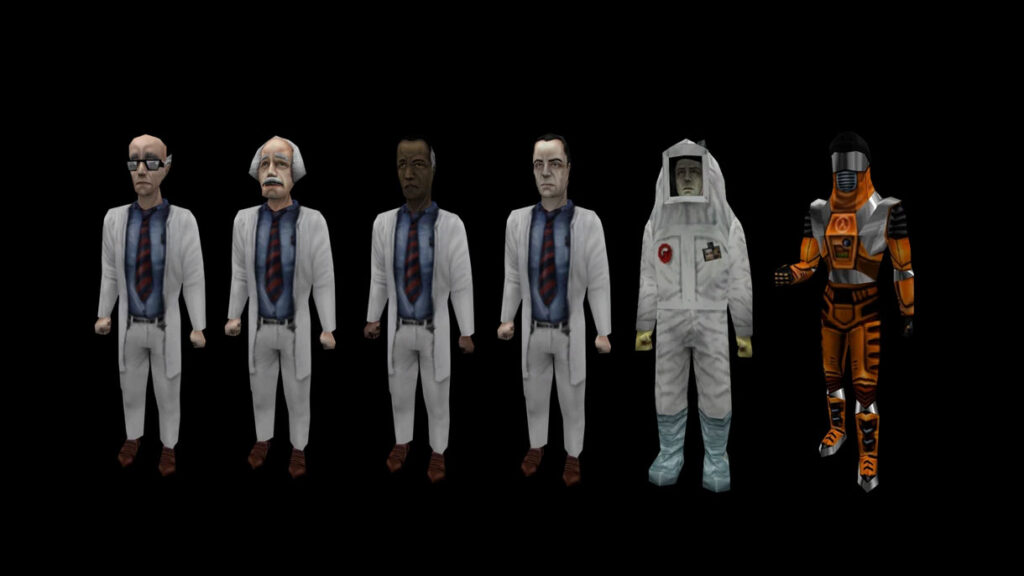
Our ideas about what constitutes graphical realism in a game change over time. I remember playing Half Life when it came out, and sort of thinking – hey it’s almost real. Now I look at it and see characters as rubbery walking cubes with textures stretched over them (see the image above). They don’t look remotely real. The message for us now: even though Unreal Engine 5 is pretty amazing, probably our eyes will be even more discerning 25 years from now, and Cyberpunk 2077 will look like kiddie drawings.
Building worlds
The game takes place in your head. I’ve talked about dreaming games before. Actually, all games are dreaming games. What is a person actually doing when they sit at a desk and play a game? Literally they are in a chair, not moving, focussing on a bit of luminescent plastic two feet in front of them. And they stay there for hours. If you play Starfield, for example, you might sit in that position, on and off, for over 100 hours. All computer games take place in your head. Knowing this, and knowing the susceptibility of humans to story, we can see that for most games, story/setting is crucial. It’s about the dreaming.
Half Life was so successful because it sucks you in, from the very beginning, into a coherent world. The introductory credits are you riding a rail car into a top secret research facility, down, down, down, past steel and concrete, to the heart of the madness. You can move around and look as you ride that rail car, full 3D control, and that was revolutionary for a game of that time. You are not sitting in a chair, staring at a piece of plastic two feet in front of you. You are there.
To sign up to this newsletter, enter your email, tick the box and click subscribe!
Is it any good?
Can any old game really be “the greatest game ever made”? The graphics are so crude! The worlds are so empty! Half Life swept the awards pool after it was released in 1998, and launched Valve on the road to gaming domination through its Steam platform. So Half Life has this pivotal role in the history of video games. Also, it shows how two centres of gaming dominance – Epic and Steam – are connected through the Unreal Engine, which was used by Valve to make Half Life. And don’t forget the dominant and influential Counter Strike was originally a Half Life mod.
Saying Half Life is one of the greatest games ever made is a bit like people saying Battleship Potemkin is one of the greatest movies ever made … maybe, if you understand the history and the context of the time it was released. If you don’t, you’re not even going to look at it.
Half Life is like that. It’s a 550mb install and could probably run in a browser on Poki.com.
Three famous games vs. the kids
How do the great games of the past stack up against each other when you play them now? Starcraft and Zelda: Ocarina of Time are also 25 years old this year, and along with Half Life represent a kind of hall of fame for RTS, RPG, and FPS games respectively. I’d love to see how a kid reacts to these three legendary games. I expect disdain but I could be wrong. My hypothesis is that Zelda and Half Life would do better than Starcraft, because the stories are more integral.
Half Life Unchained
How would blockchain games developers go about remaking Half Life? To a man with a hammer, everything looks like a nail. To a developer in need of funding, everything looks like an opportunity to incorporate blockchain. Oh, and by the way, it’s not a game, it’s an IP franchise which includes several games, and some blockchain infrastructure. Two points to make: if blockchain is going to work in games, it will do so without advocacy, and IP franchises are never born whole.
If you had asked me what games would be like in 25 years in 1998, I think I would have expected more. Today’s games look incredible, but they are not indistinguishable from real life – and in terms of the fundamental mechanics, they are the same as Half Life for the most part. Making my way back up the Black Mesa research facility, I soon forgot about the low-poly models and rubbery skins and got into the flow of finding ammo, solving puzzles, and wasting aliens.
The real innovation at the moment seems to me to be in the social engineering that surrounds games, and how they can make otherwise ordinary games incredibly fun to play. Consider Among Us – a kind of low-res “murder in the dark” – and the early access smash hit Lethal Company. Lethal Company is schlock horror and it has people screaming with laughter. It’s in this area of extending games into the real world that blockchain gaming has a big role to play.
The official Polemos games index
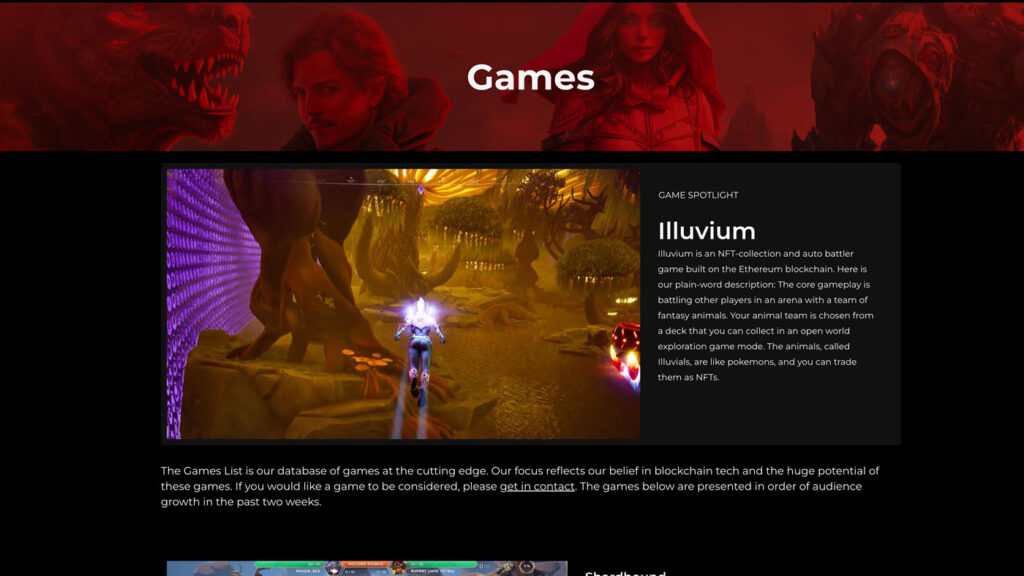
There are 37 blockchain games on the official Polemos watchlist, and now you can access the list and associated data at our site.
The criteria for inclusion on the list are that a game is of interest to us for some compelling reason, either because we think it shows great promise, has an experienced team, or are invested in some way. It is almost certain there are great blockchain games out there that we are ignoring for no good reason, so please get in contact if you spot a glaring omission. Go there
Illuvium PvP is almost here
One of the most-anticipated blockchain games, Illuvium, is finally getting closer with the open launch next week of the autobattler PvP mode. The hype is building, the game’s token ILV is higher than it has been in a year, and finally non-insiders will be able to play the game. Naturally we have the launch covered – check out Caveman’s introduction here:
Another massive blow to crypto in the US
I have to acknowledge the biggest news of the week: crypto exchange Binance pleading guilty to criminal and civil charges related to money laundering, with CEO Changpeng Zhao (CZ) stepping down and also pleading guilty to charges that could see him jailed. US regulators are making good on their promise to bring crypto to heel, with gargantuan fines of $4.3b to match the misdeeds. CZ seems to be handling it better than Sam Bankman-Fried. We’ll see if he manages to keep his cool if/when jail time is looming.
Enjoy our reporting? Sign up for the Polemos newsletter and receive an update every week for free.

